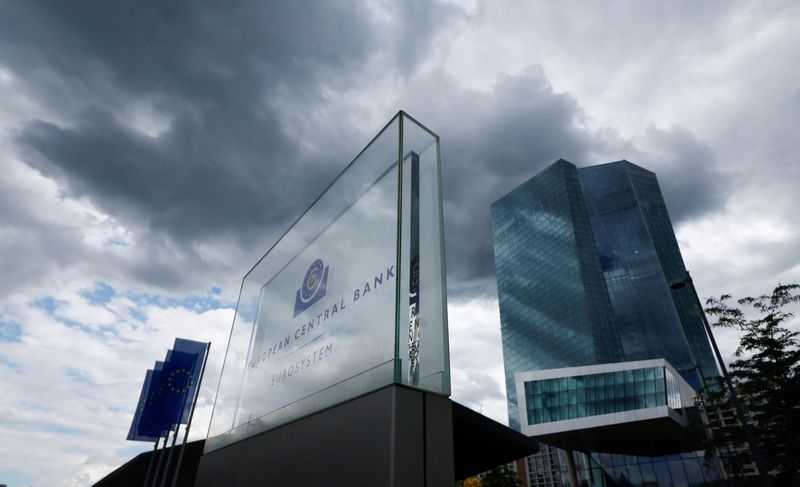By Balazs Koranyi
FRANKFURT (Reuters) -The euro zone economy showed some signs of life on Tuesday with a raft of indicators pointing to lukewarm but still positive growth for a bloc that has been skirting a recession for over a year.
Industrial output expanded and lending demand rose, while expectations in a key German sentiment survey also increased more than predicted, offering some reassurance after key indicators tended to underperform expectations over the past month.
The figures are likely to reinforce bets that the bloc is still growing, even if at the slowest possible pace, but are unlikely to prevent the European Central Bank from delivering an interest rate cut, which is now almost fully priced in.
Industrial production rose by 1.8% on the month in August, a touch ahead of expectations, and was up 0.1% from a year earlier, driven by rising demand for capital and durable consumer goods, Eurostat said.
Output in Germany, the bloc's biggest economy, surged more than 3% on the month, the biggest rise among the bloc's larger economies, even if the annualised figure was still deeply negative.
High energy costs, lukewarm demand from China and increased competition from other producers have weakened Germany's industry in recent years, prompting some soul searching over the viability of the country's industry-focused economic model.
"Still, expectations about industry remain lacklustre for the rest of the year," ING economist Bert Colijn said. "The list of concerns for eurozone industry is long at the moment, and ... it’s pretty hard to see the start of a vibrant recovery for the sector at this point."
In another mildly hopeful sign for Germany, investor morale improved more than expected in October with the ZEW economic sentiment index rising to 13.1 points from 3.6 points in September.
Expectations for low and stable inflation, bets on further rate cuts and some mild improvement in export demand all contributed to the better sentiment reading, the ZEW said.
It added that China's recent stimulus measures are also fostering some hope for both Germany and the broader euro zone.
The ECB has cut rates twice already this year and is almost certain to ease again this week while also keeping a further move on the table for December as inflation is now within striking distance of its 2% target.
This would add up to one full percentage point of rate cuts with another percentage point priced in next year, suggesting investors see the benchmark halving from its previous high of 4%.
Rising loan demand, a precursor to durable economic growth, is also reflecting hopes for lower rates.
Demand for bank loans, the key source of funding for the corporate sector, rose in the third quarter and a further increase is expected in the final three months of the year, with household mortgages driving the expansion, the ECB said based on a survey of top lenders.
Lending growth has been hovering above zero all year as high interest rates and weak growth have pushed down demand, depressing prospects across a bloc skirting a recession for years.
"For the first time since the third quarter of 2022, banks reported a moderate net increase in demand from firms for loans or drawing of credit lines, while remaining weak overall," the ECB said in a quarterly survey of 156 large lenders. "Net demand for housing loans rebounded strongly."

Lower interest rates drove corporate loan demand but investments had little impact, the ECB said. Among household customers, the rise in demand was driven by declining interest rates and improving housing market prospects.
This quarter banks see a further rise in net demand across all loan segments, especially for housing loans.